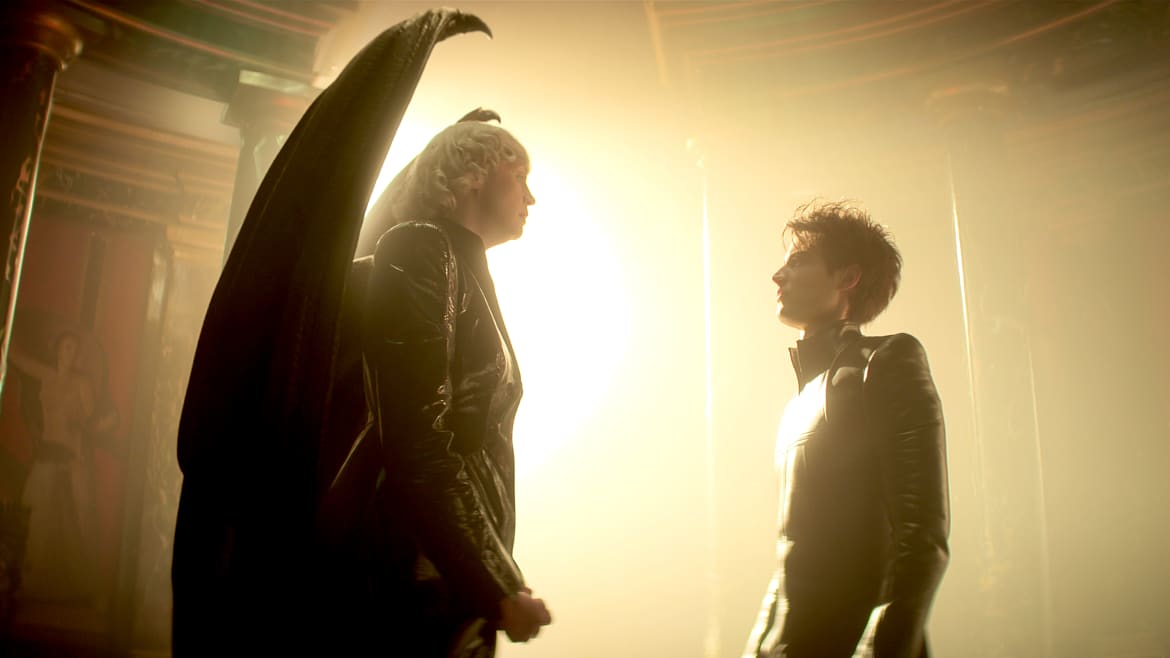Netflix
Plans for a screen adaptation of Neil Gaiman’s celebrated DC/Vertigo graphic novel series The Sandman have been around for almost as long as the three-decades-old title itself. Following numerous starts and stops, Netflix has finally delivered with The Sandman, a ten-part venture (Aug. 5) starring Tom Sturridge as the title character, who’s also known as Dream (or Morpheus) and is one of the seven Endless, a family of god-like metaphysical elements who’ve assumed human form à la Gaiman’s American Gods and Good Omens. Dream’s saga is a sprawling one that spans the ages and grapples with issues of destiny, hope, ambition, and purpose. In its first season, though, it’s weighed down by helter-skelter storytelling that borders on the aimless—and, consequently, renders it a snooze.
Created by Gaiman, David S. Goyer and Allan Heinberg, The Sandman opens as its source material does, with Sir Roderick Burgess (Charles Dance), an occultist who likes to be called Magus, using a magic ritual to conjure Death so that he might resurrect the son who died on the battlefields of Gallipoli. By accident, however, this ceremonial invocation instead summons Dream at the very moment he was about to fell The Corinthian (Boyd Holbrook), a nightmare who abandoned Dream’s Dreaming realm for a life in the mortal world, where he’s fond of murdering people and cutting out their eyes. Dream becomes the prisoner of Roderick and, later, his son Alex, spending the better part of 100 years trapped in a fancy glass case in an English manor’s expansive basement. During this entire century, Dream is nude and says nothing, biding his time for the moment when he might finally achieve liberation and, ostensibly, wreak vengeance on his captors.
With a swirling mop of black hair atop his head, his skin as pale as moonlight and his frame as lithe as a specter, Sturridge cuts a faithfully striking figure as Dream, and with a little post-production sonic enhancement, his voice has a deep, echoing quality to it that nicely fits the protagonist. Unfortunately, he’s largely envisioned as an aloof bore. Upon finally escaping confinement, Dream discovers that his realm is in shambles due to his absence and neglect, and he embarks on a quest to recover the three tools that grant him his power. Those include a ruby, a pouch of sand, and a giant gas mask with a prolonged spine-ish tube that he dubs his Helm. Yet despite indulging in great gobs of exposition, The Sandman doesn’t lucidly explain the precise nature of these objects’ significance, which is in keeping with a narrative that feels like it’s missing vital connective tissue and, therefore, is aimed at fans who already know the details that fill in these gaps.

